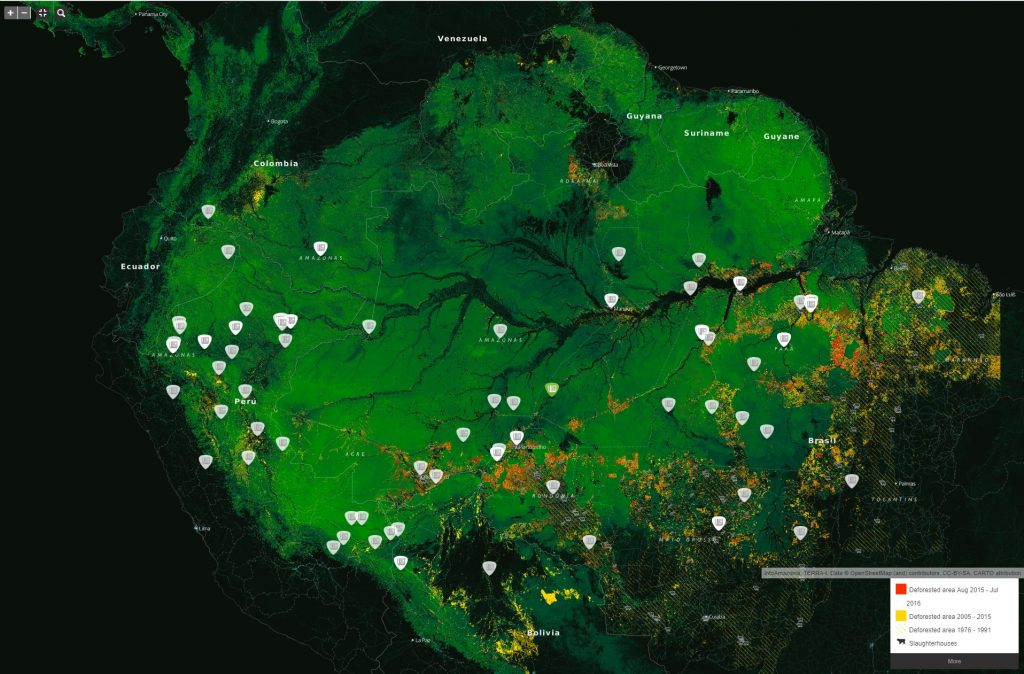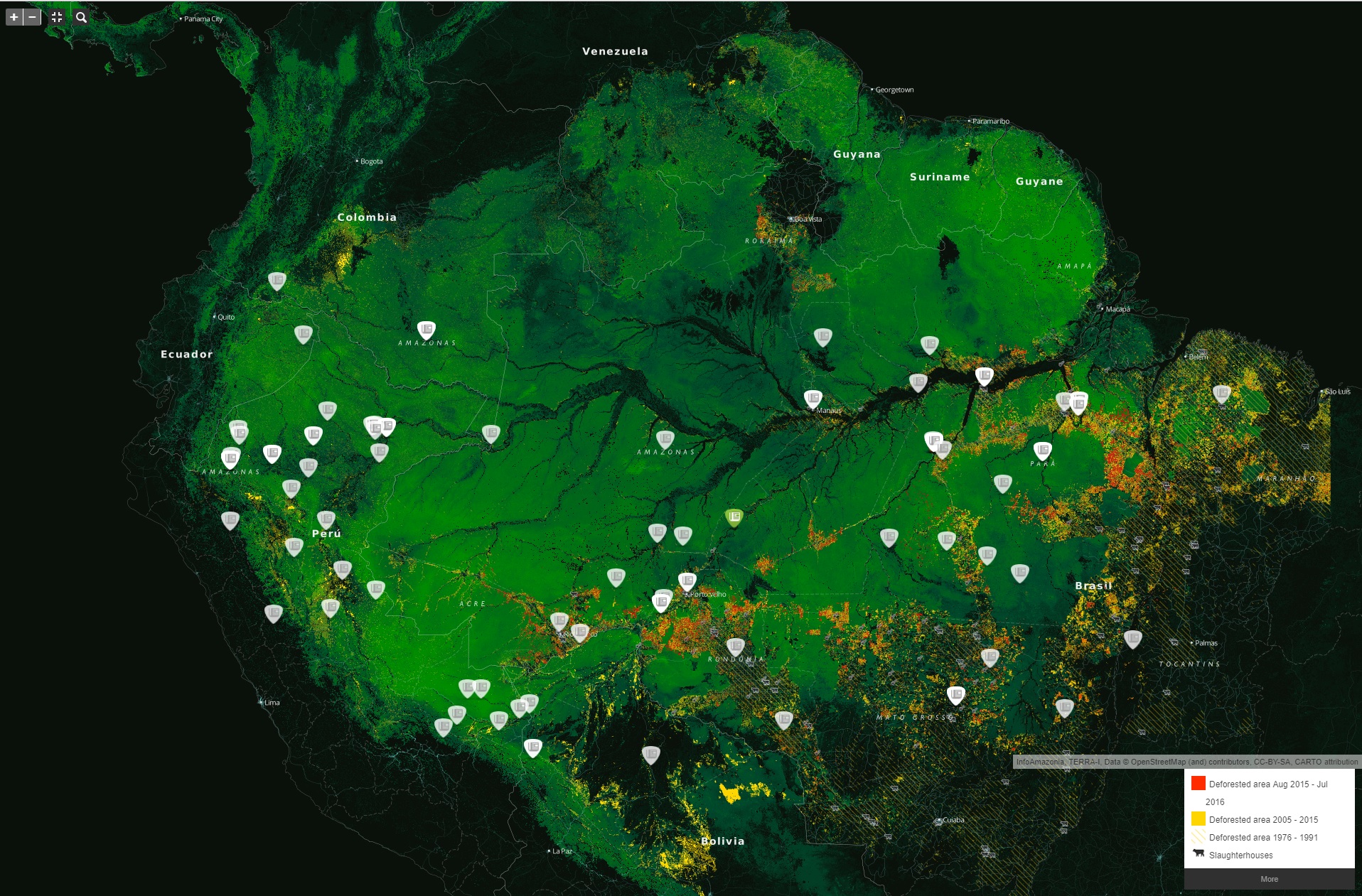Turning Slow-Burn Environmental Crises Into News: Use Every Trick In the Book

Map of deforestation in the Amazon with pins marking geo-tagged news coverage. Click here for interactive version. Credits: InfoAmazonia, TERRA-I, Data © OpenStreetMap and contributors, CC-BY-SA, CARTO
By Alex Fox
BERKELEY, California—Too often, the most pressing environmental issues faced by humankind fade away when the news cycle ends. Without breaking news to inject them back into coverage, these stories can dwindle even as their impacts intensify.
But there are reliable ways for journalists to forge compelling stories at any time from ongoing issues like climate change, deforestation, and islands being engulfed by the sea, according to speakers at the World Conference of Science Journalists 2017.
The 29 October session, “Make ‘em Sizzle: Turn Up the Heat on Slow Environmental Stories,” attracted a room full of science and environment reporters to the University of California, Berkeley. The panel advised journalists how to report and write stories that grab readers—and editors—by the lapels.
Find an angle
For stories that don’t leap off the page, a journalist has extra work to do. Finding the immediacy in a topic may mean reporting policy implications, spotting trends or focusing on solutions.
Telling these stories in concert with fresh science offers an advantage: “Whenever we have used science to tell the story as a backbone, as an investigative tool for telling environmental stories, it has always stood out,” said Subhra Priyadarshini, editor of Nature India.
Let data tell the story
Using data to tell stories doesn’t mean just inserting a pie chart. “We need to hack space and time,” said Gustavo Faleiros, founder of the South American digital news platform InfoAmazonia.
To communicate stories across space and time, he said, the best way to show an audience what’s happening may be to represent it graphically—with satellite imagery, GIS and clear visualizations. For example, interactive maps at InfoAmazonia allow readers to pivot from an overview of Amazon deforestation to individual new stories covering local impacts.
Ask scientists for help
One key to making any story work is to draw out societal implications. Most journalists are good at this, but scientific experts can be even better—if they are given a push. But scientists can be reluctant to step outside the boundaries of their studies, which then puts journalists in the position of speculating.
“We scientists need to suck it up a bit and help make that last bridge.”
“We scientists need to suck it up a bit and help make that last bridge,” said environmental scientist Jennifer Burney of the University of California, San Diego. Whether it is scientists taking initiative or journalists engaging in some professional pestering, it’s vital for stories to present new science in its proper context and to convey responsibly its implications for the real world.
Work globally, work together
Many environmental stories span the globe. Covering them requires journalists to think beyond the borders of their home country. Faleiros and Priyadarshini both cited wide-ranging fellowship opportunities—for example, at Earth Journalism Network and Nature India—as a way to expand journalists’ ability to cover global issues with authority. Fellowships also help journalists find researchers doing great science in the field that isn’t getting covered.
Faleiros told the group about the power of platforms, like InfoAmazonia, which provide digital infrastructure for collaboration. Covering issues that stretch across multiple countries may require journalists to act as entrepreneurs, creating their own networks of other journalists to help cover a particular topic.
Do it all
There is no one-size-fits-all answer to bringing these slow-burn environmental stories to life, but these stories must be told, the panelists agreed.
It’s the responsibility of journalists to find the right angle, the right data, or the right expert to bring such stories to life. Covering environmental stories is a calling, and answering that call means using every tool available to make them land with impact and effect change.
—
Alex Fox studies in the Science Communication Program at the University of California, Santa Cruz. He primarily covers environmental issues and new research in ecology and conservation. Email him at almfox@ucsc.edu and follow him on Twitter @Alex_M_Fox.

